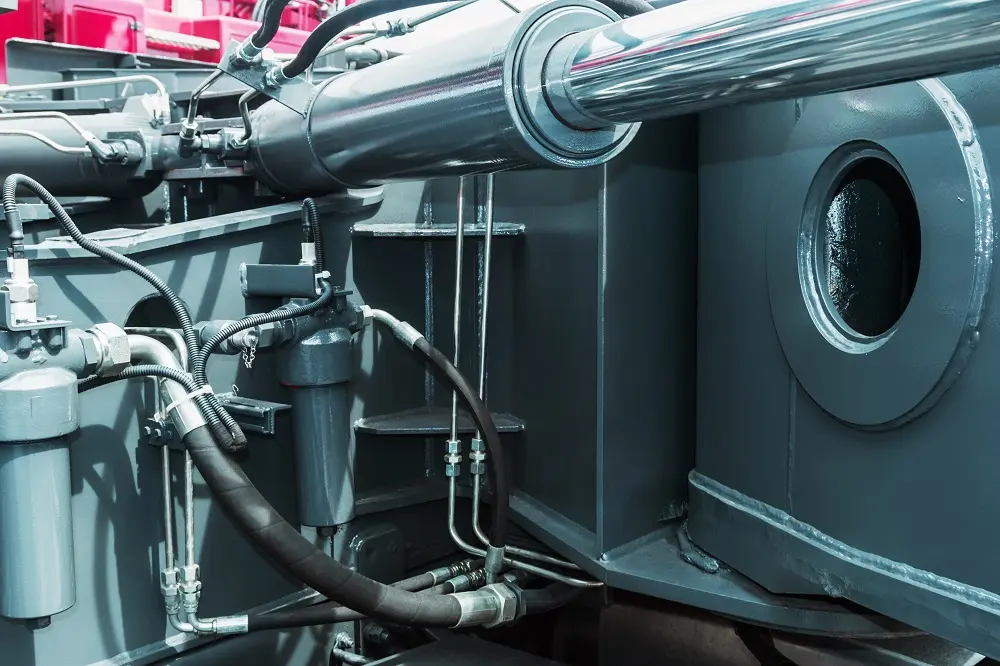
Hydraulic cylinders are integral to the efficiency and functionality of many industrial machines. One crucial aspect of maintaining and repairing these cylinders is chrome plating. This process not only enhances the cylinder’s durability but also significantly increases its resistance to corrosion and wear. This article delves into the innovative techniques in hydraulic cylinder chrome plating, exploring its critical role and benefits in the context of hydraulic cylinder repair.
What is Chrome Plating?
Chrome plating involves coating the cylinder’s components, particularly the rod, with a thin layer of chromium. This metal coating is applied through electroplating, a chemical process that fuses chrome onto the metal’s surface. The primary purpose of chrome plating is to improve the metal’s surface properties, offering benefits such as:
- Enhanced Durability: Chromium is known for its hardness and durability, making the hydraulic cylinder more resistant to wear and tear.
- Corrosion Resistance: Chrome plating provides a protective barrier against rust and corrosion caused by exposure to moisture and chemicals.
- Improved Sealing: A smoother surface allows for better sealing capabilities, reducing the likelihood of fluid leaks.
- Aesthetic Finish: Chrome plating gives hydraulic cylinders a clean, professional finish that is visually appealing.
Advances in Chrome Plating Techniques
The process of chrome plating hydraulic cylinders has seen significant advancements in recent years. These innovations not only improve the quality of the plating but also make the process more environmentally friendly and cost-effective. Some of the cutting-edge techniques include:
- Composite Plating: This method incorporates the deposition of chromium and other elements like silicon carbide to enhance wear resistance further.
- Pulse Plating: By using higher current densities in short bursts, pulse plating improves the distribution of the chrome layer, resulting in a more uniform coat.
- Hard Chrome Plating: This is specifically used to increase surface hardness and load-bearing capacity, ideal for industrial hydraulic cylinders.
The Role of Chrome Plating in Hydraulic Cylinder Repair
When hydraulic cylinders fail, chrome plating plays a pivotal role in the repair process. Re-plating a worn or damaged cylinder can restore its functionality and extend its service life dramatically. Here’s how chrome plating fits into the repair process:
- Surface Restoration: Chrome plating can repair surface imperfections, such as scratches and pits, that occur from regular use.
- Enhanced Component Life: By adding a protective layer, chrome plating can significantly extend the life of the hydraulic cylinder’s components.
- Cost Efficiency: Repairing and re-plating a hydraulic cylinder is often more cost-effective than replacing it entirely.
Their Expertise
Cylinders, Inc specializes in the chrome plating of hydraulic cylinders, employing state-of-the-art techniques to ensure the highest quality and durability. Their expertise not only lies in applying chrome plating but also in assessing when and how it should be used to maximize the lifespan and performance of hydraulic cylinders.
Future Trends in Chrome Plating
As technology evolves, so too do the techniques used in chrome plating. Future trends may include the use of nanotechnology to create even more resilient coatings and the development of eco-friendly alternatives to traditional chrome plating solutions. These innovations promise to further enhance the efficiency and sustainability of the hydraulic cylinder repair process.
For more detailed information on chrome plating services or to consult with experts on the best maintenance practices for your hydraulic equipment, website offers a wealth of resources and professional guidance. Their commitment to quality and innovation makes them a leader in the field of hydraulic cylinder maintenance and repair.
Chrome plating remains a cornerstone technique in the repair and maintenance of hydraulic cylinders. Through continuous innovation and the application of advanced technologies, the process is becoming more efficient, sustainable, and effective, ensuring that machinery operates at peak performance for longer.



